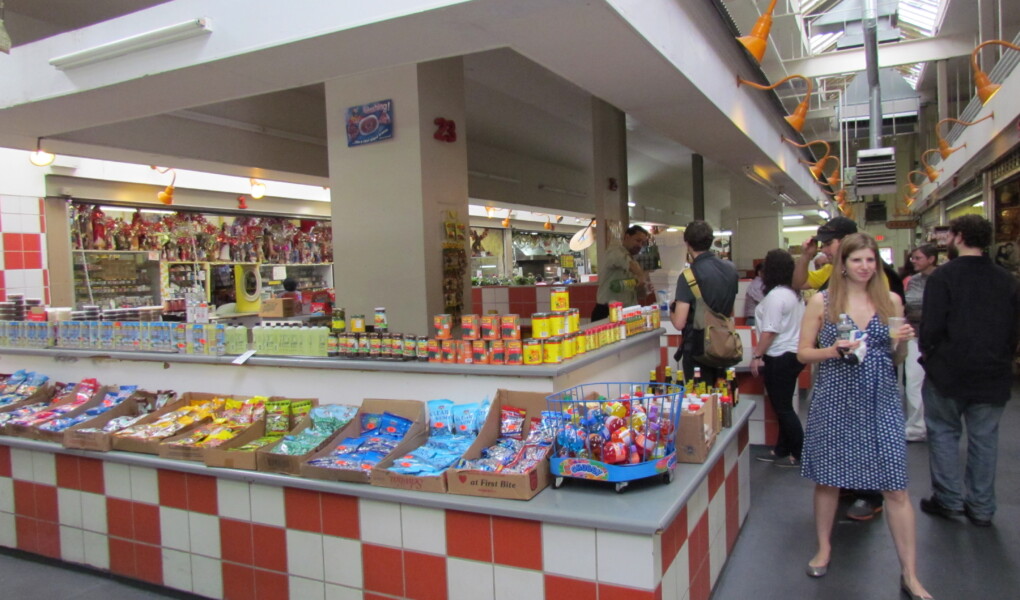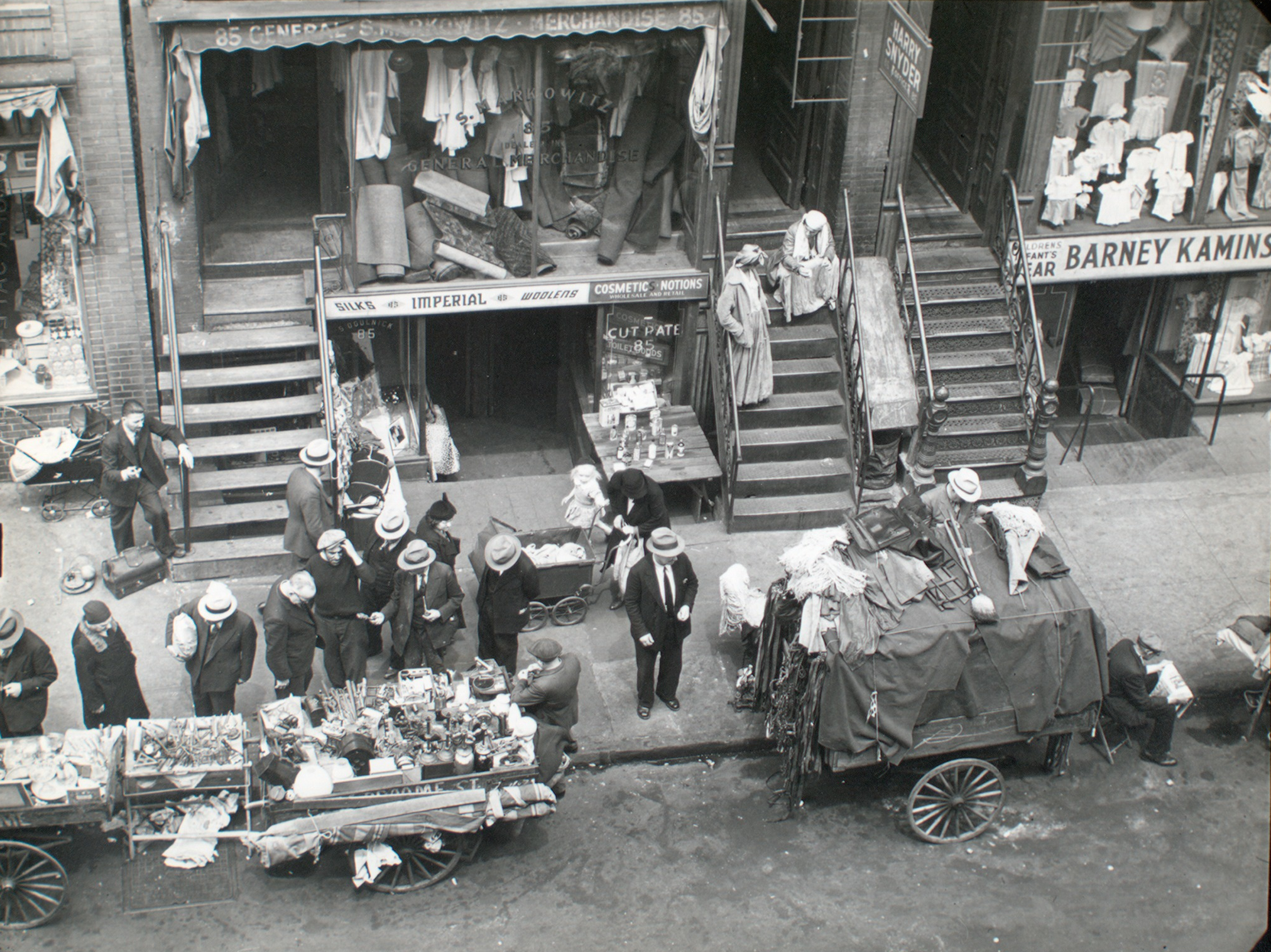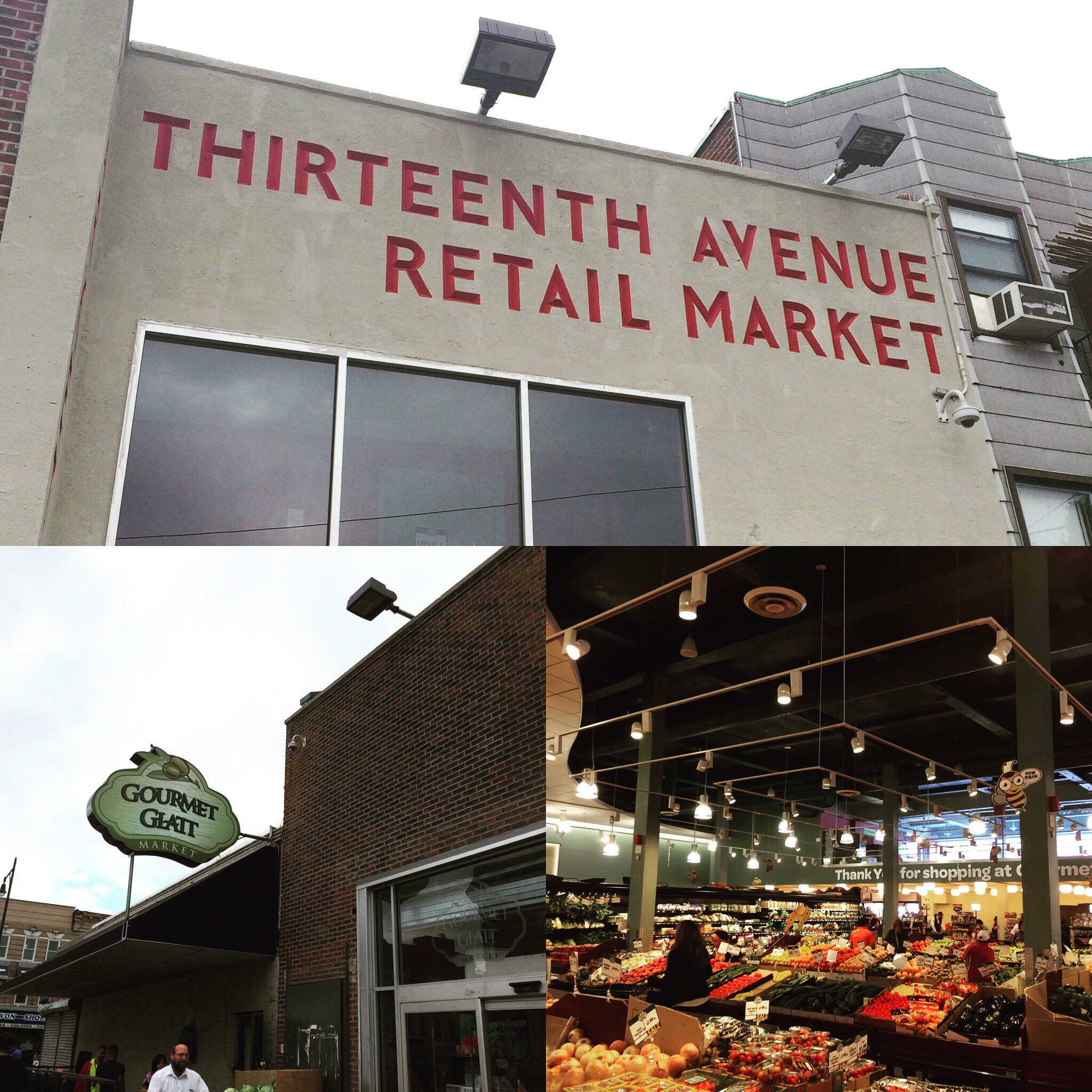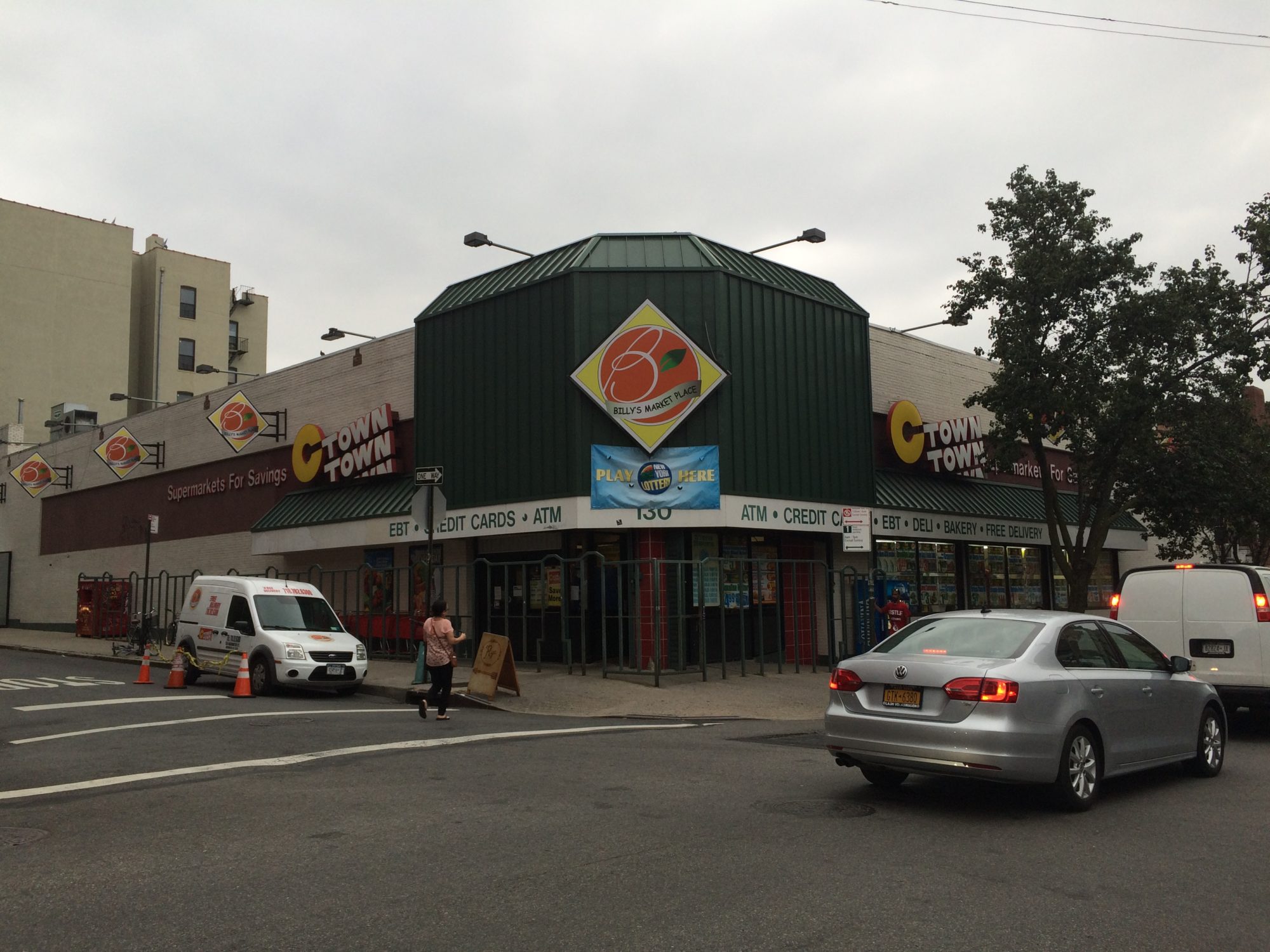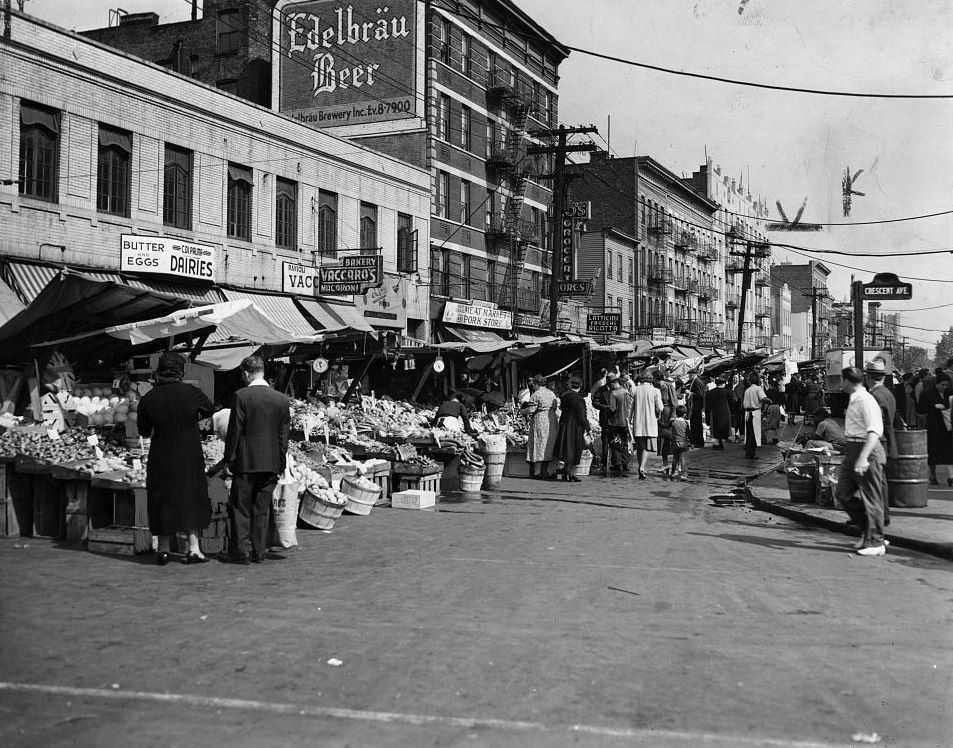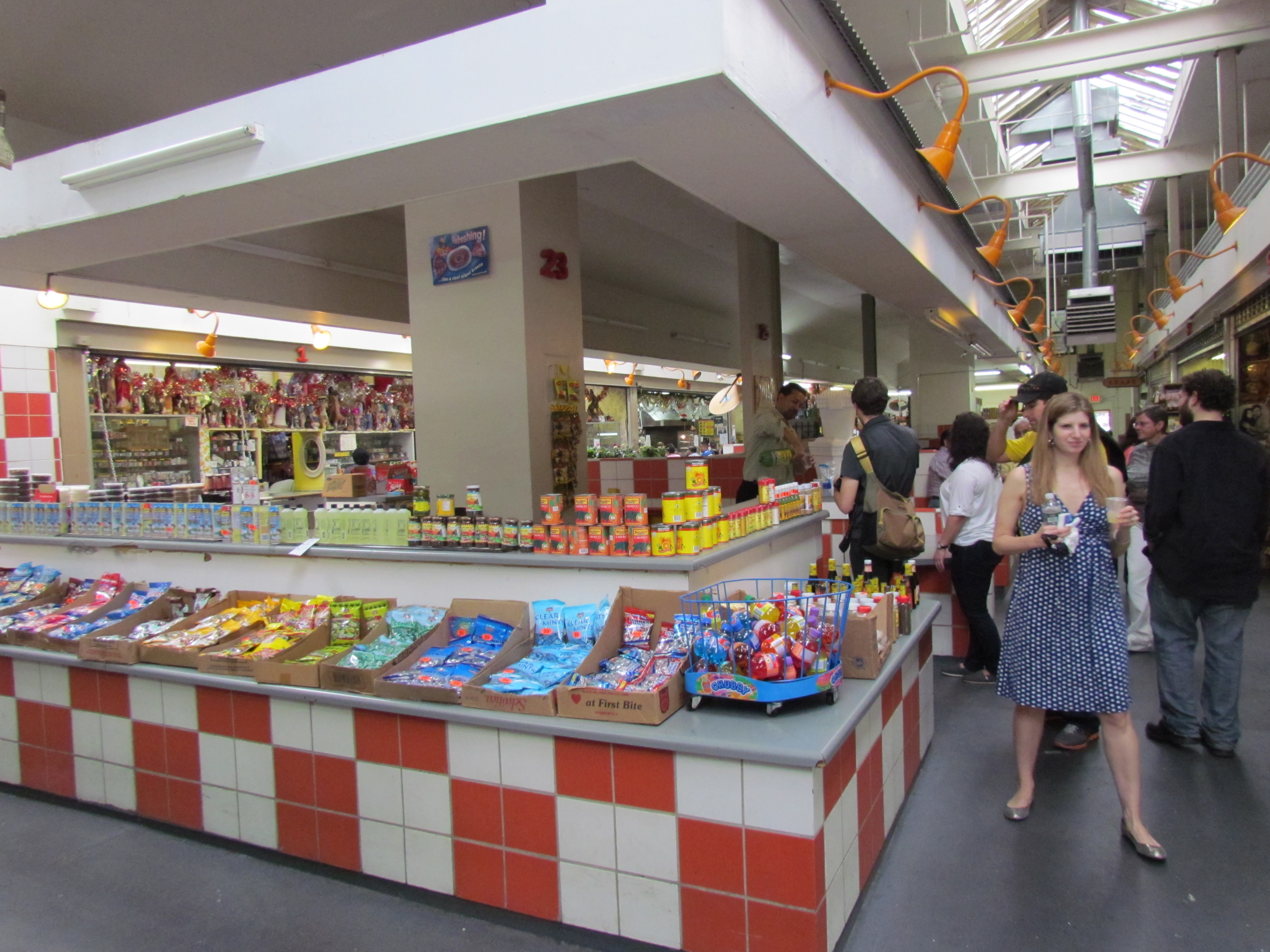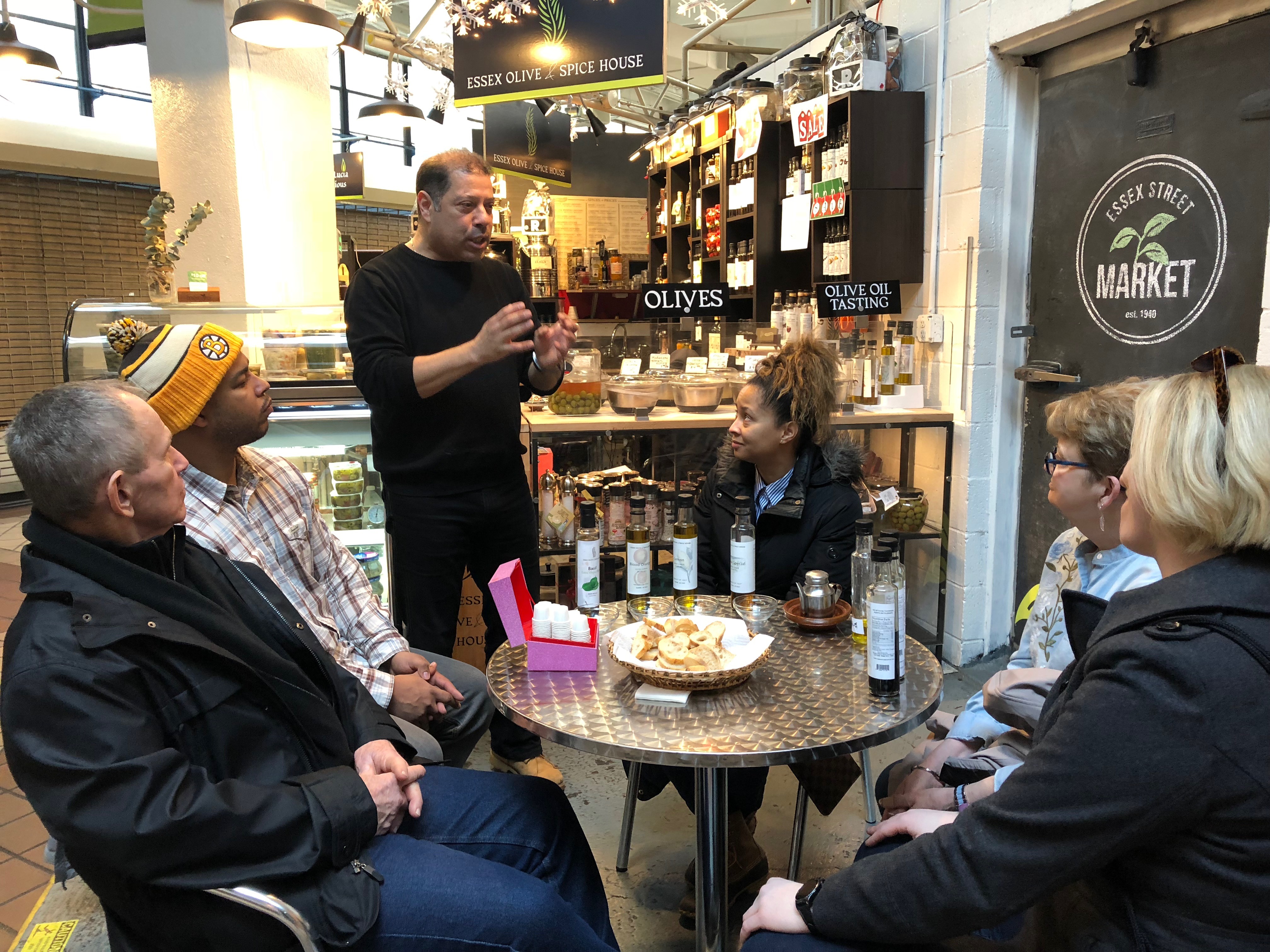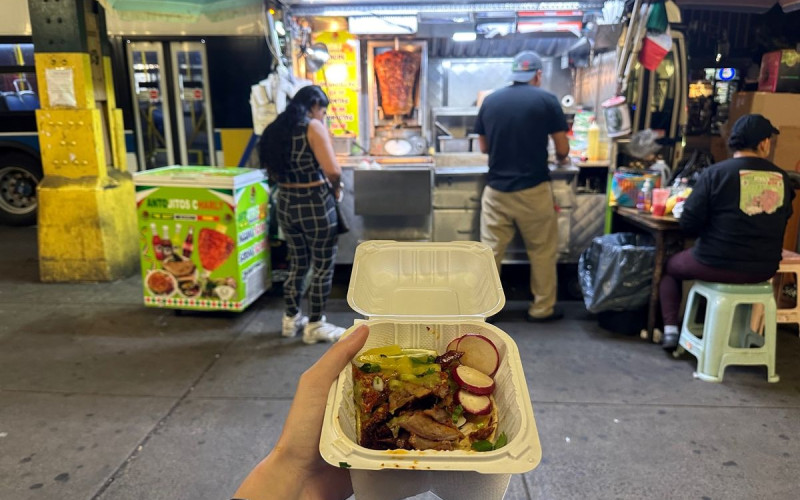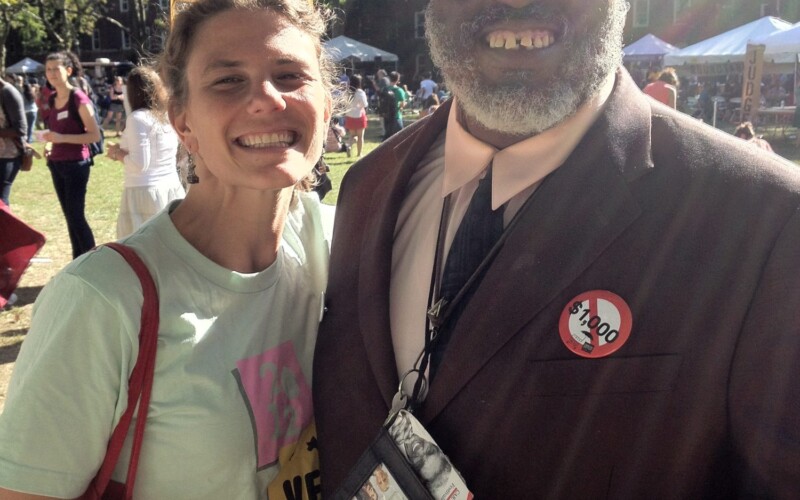This weekend marks the end of an era, as the Essex Street Market will be moving from the building it has occupied since 1940 into a new facility across Delancey St in the Essex Crossing development. The new Essex Market will have nearly all the same vendors as the old market, plus 15 additions, in a larger space that will be more convenient for shoppers and vendors.
The old market building had its own charms, and it represented an important period in New York City’s history, when Mayor Fiorello La Guardia fought to keep food affordable for New Yorkers and to provide indoor space for the city’s growing population of street vendors in the midst of the Great Depression. As we say goodbye to the old market, we are looking back at the history of the city’s public markets, and what happened to the rest of them.
Peddlers to Merchants
The mayor took up the issue of markets soon after his election in 1933, arguing that the city’s food distribution was inefficient, wasteful, and prey to price gouging. With unemployment well above 20%, not only were food prices a critical issue, but many people turned to street peddling to survive. Many more itinerant peddlers were now on the streets, in addition to the 6,000+ pushcart peddlers already in the city’s licensed open-air markets.
La Guardia’s plan involved tackling both retail and wholesale food. With money from the federal Works Progress Administration, he built new facilities at the Bronx Terminal Market, Hunts Point, Washington Market, Long Island City, Canarsie, and the Fulton Fish Market, with better cold storage and freight handling to reduce spoilage. He hired Frances Foley Gannon as Deputy Commissioner of Consumer Services, who delivered weekly radio addresses on WNYC for nearly 30 years about food prices, seasonal produce, and recipes. And he built a system of enclosed retail markets that would replace the open-air pushcart markets and provide affordable, sanitary space for (some of) these street vendors.
At its peak, the system encompassed 10 markets in Manhattan, Brooklyn, and the Bronx, with space for 2,110 vendors – far fewer than the total number of pushcarts they were meant to replace – built between 1937 and 1955. While the markets did well in the early days, driving down prices and proving particularly useful during World War II’s rationing and food shortages, they did not fare so well in the post-war years. With competition from new supermarkets and depopulation of many of these neighborhoods to the suburbs, the closure of the markets began in the late 1950’s.
The first to close was actually the longest-standing public market in New York City. The Washington Market had existed in one form or another since 1813, and it underwent major renovations in 1941, with a new retail building with 300 stalls. It closed in 1956, later becoming the site of Six World Trade Center (destroyed in the September 11 attacks) and is now the site of One World Trade Center. The closure of the Washington Market was shortly followed by the Second Avenue Retail Market, located on 72nd St on Manhattan’s Upper East Side since 1942, and then the Harlem Market in 1959, which had been in operation for less than four years on 142nd St and Frederick Douglass Blvd.
The closures continued through the 1960’s, and today, four of the markets are still in operation as multi-vendor public markets, and seven (soon to be six) of the original market buildings are still standing. Let’s first take a look at the three market buildings that have survived for other uses.
Markets Gone But Not Forgotten
Thirteenth Avenue Retail Market
The oldest public market in Brooklyn, this opened in October 1939 on 13th Ave and 39th St, in the Borough Park neighborhood, it was a relatively small market with just 137 stalls. The building is still owned by the city and overseen by the NYCEDC, but since 1965, it has been a single-tenant grocery store, currently a Gourmet Glatt kosher supermarket. You can still see the signage for the old public market on the exterior.
First Avenue Retail Market
Another spot where the building and signage have been preserved is along Manhattan’s First Ave between 9th and 10th St. Opened in 1938, this market was also relatively small. It hung on until 1965, when the city converted the building into a garage for the Department of Sanitation. In 1987, the building was purchased by the Theater for the New City, which has occupied it ever since. Though the theater bought the building, the city retained the air rights, and in 2001, a 16-story residential building was built over top of it.
Havemeyer Street Retail Market
Opened in Williamsburg on the corner of Havemeyer St and South 1st St in 1942, today nothing is visible on the outside of this market building that would give a clue as to its history. Like the Thirteenth Avenue Market, this closed in the late 1960’s to become a single-tenant store, first King Charles Discount store, and since 1997, C-Town Billy’s Marketplace supermarket.
Today’s Public Markets
La Marqueta (aka Park Avenue Retail Market)
The oldest public market in New York City, this opened to much fanfare on May 4, 1936. The public markets were meant to create indoor space to replace open-air pushcart markets, and Park Ave in East Harlem was the epicenter. Since the construction of the New York Central Railroad’s viaduct through the neighborhood 40 years before, vendors had been congregating underneath the tracks. The new market enclosed this space in five buildings between 111th St and 116th, providing space for 458 vendors.
Known as La Marqueta since Spanish-speaking vendors and customers began to dominate the market in the post-war years, it became an important center of cultural life as this area became known as Spanish Harlem. In the 1970’s, the market had over 250 vendors, but it went into a period of decline; the surrounding tenements were replaced by superblocks of public housing, reducing foot traffic, public support dwindled, and it was severely damaged by fire in 1977.
In 1993, the city decided to consolidate the remaining vendors into a single building, Lot 4 between 114th and 115th St, which today houses 10 vendors. The market is anchored by Hot Bread Kitchen, which has a retail location in the market, and also operates the other remaining original building, Lot 3, for its HBK Incubates program, a commercial kitchen and incubator for food entrepreneurs. Lot 5 is now an open plaza that frequently hosts public events and festivals, and Lot 6, formerly an open-air pushcart lot, is home to the Urban Garden Center.
Arthur Avenue Market
This market is an anchor of the “other Little Italy” in the Bronx. Built in 1941, the market originally was a haven for 120 vendors, again just a small slice of the massive number of pushcarts in the Bronx. While the other markets can boast vendors that have been operating continuously since the 1970’s, only the Arthur Avenue Market has stall that has been there essentially since the market’s opening.
Mike Greco began working in the market in 1947 for Gennaro Cappiello, an Italian butcher that had been in the neighborhood since 1922, then moved to the market in 1941. Mike married Gennaro’s daughter Antoinette in 1951 and took over the business, renaming it Mike’s Deli. It has become a fixture of the Bronx, featured in movies, TV, and political campaigns, and known for its quality and consistency. Mike’s son David took over in 1990, but sadly, Mike passed away in March of this year at age 89.
Like any good public market, Arthur Avenue is one-stop shop for a wide variety of items, from traditional Italian fare, to flower arrangements, tailoring, and hand-rolled cigars. In 2013, the market added a major attraction in the Bronx Beer Hall, which serves craft beer and food items from throughout the market, including from Mike’s Deli, a partner in the business.
Moore Street Market
Moore Street had long been a haven for pushcart peddlers, located in the heart of an area known as “Little Jerusalem” a century ago for its large Eastern European Jewish population. Like the Park Avenue Market, by the 1940’s, much of the Jewish population of vendors and clientele had given way to new arrivals from the Caribbean. Today the market is also widely know as “La Marqueta” or “La Marqueta de Williamsburg,” with most of the vendors of Puerto Rican, Dominican, or Mexican heritage.
Though it survived the closings of the 1960’s, the market very nearly closed in 2007, but a petition drive and support from Rep. Nydia Velazquez kept the market open, and it remains an important part of East Williamsburg, providing affordable food for the neighborhood’s cultural communities. We have come to know the market and its vendors well, as we have led tours of the market and nearby Graham Ave (aka The Avenue of Puerto Rico) since 2011. Some of the long-standing vendors include Ramonita’s Restaurant (fantastic Dominican food), American Coffee Shop (Puerto Rican food prepared by a Mexican couple), and La Union Fruit & Grocery (specialty Caribbean produce). Like Park Avenue, the market also has a commercial kitchen, operated by Body & Soul vegan bakery, and the lot next door houses Oko Farms, an aquaponics farm the grows produce and raises fish.
Essex Market
The Essex Street Market was designed to replace the sprawling pushcart market, which covered the surrounding streets, including 14 blocks of nearby Orchard Street. Spanning four building from Broome St to Stanton St and 475 stalls, the market surpassed even its massive uptown rival in sheer size. But like the other markets, Essex Street went through hard times. In 1963 it housed 335 vendors, but in just three years this plummeted to 120, and by 1986 just 60 remained. In the early 1990’s, like with La Marqueta, the NYCEDC took control of the market and consolidated all of the vendors into a single building, and the renovated market opened in 1995.
For much of its history, the market housed a variety of vendors, selling not just produce, but also merchandise like clothing, electronics, and religious artifacts. With the renovation, the city decided to focus the market on food, and the old market had roughly two dozen vendors, most of them serving prepared foods, along with grocers, butchers, and fishmongers. We have led tours of the market with the Vendors Association since 2015, and we love all the businesses in the market, so we won’t single anyone out – try them all!
While we love the WPA charm of the old market buildings, the new facility will address some of its major deficiencies. First is the lack of curb appeal; all the old markets were windowless brick buildings, making them rather uninviting , while the new market is a glass-enclosed, ground-floor space. Second is the lack of a loading dock; all merchandise had to be loaded in along Essex St, limiting delivery time, snarling traffic, and blocking the sidewalk. And finally, the old market lacked seating, which the new facility will have in abundance for hungry visitors.
We are sad to see the old market building go, and sad that some of the vendors did not make the move to the new market. But we are also excited that the vendors will have the opportunity to expand their businesses into larger spaces with better amenities and more customers. It’s a new market, with a new name, new building, and new logo, but it is still the same great community of vendors we have come to know and love over the years. Good luck to all of them, and we will see you across Delancey!

